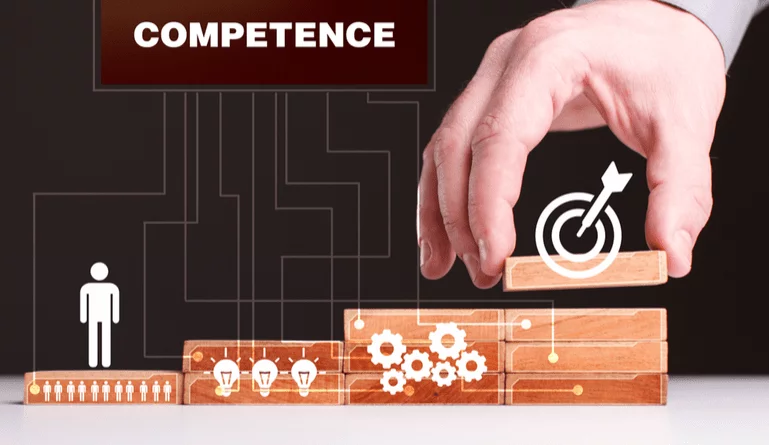Competency models are not specific to HR functions, but because HR can be a complicated system of compliance, payroll, timekeeping, recruitment, training, and development, having a competency model for your HR team can help everyone understand what’s expected of them, give direction, allow HR processes to function more smoothly, and the business to operate more efficiency from a human capital management perspective.
What is a competency model?
Training Industry defines competency model as the “framework for defining the skill and knowledge requirements of a job. It is a collection of competencies that jointly define successful job performance.” These can include a mix of hard and soft skills, from certain certifications to clear communication skills.
There are two ways, then, that competency models can help your HR team. First of all, a departmental competency model defines what it takes to be a successful HR professional. The standards that a business develops for its HR professionals help set the tone for any other staff standards. If one of the core competencies of HR is that the person responsible for payroll be in possession of or working towards a related certification, this competency would be used either during recruitment for that position or in performance reviews of that position.
Also, HR can work with leadership to help build a competency model for other positions. Competency models help companies to identify the qualities that are important and fair and help organizations built training programs and learning content, both formal and informal.
How can the competency model help your HR team?
Developing a competency model for your HR team can help your business. Here’s how to develop a competency model:
1. Ask the people who are doing the work
If a competency model is going to be used to judge an employee’s performance, it might be beneficial to ask employees what they believe the core competencies of their job are. What do they see as crucial to being successful at the work they are responsible for? Do they believe that they lack certain skills that could be developed to achieve greater effectiveness? Asking your team might be one of the first steps towards creating your competency model.
2. Organize by general vs. specific work skills
When it comes to how to develop a competency model, your HR team may find it helpful to organize competencies around specific criteria, like if the skills should belong to all employees (communication skills or other core competencies) or if the competencies are related to very specific positions (technical skills, certifications, and other specific competencies).
3. Understand how the competency models fit into the overall business strategy and success
Building a competency model does help dictate the experience and skill set needed by each employee, which helps set expectations and gives hiring managers a template as well as employees goals or standards. However, when used across an organization holistically, competency models help to align people with business goals. Organizations can use well-designed competency models to build performance assessments for existing employees, create behavioral interviews for hiring new employees, and determine selection criteria for succession planning.
4. Ask how competency may change at each career stage
Even if a person isn’t getting promoted, a longer tenure may dictate the need for greater competencies to be acquired and expressed to help continue to elevate business performance and keep employees accountable for growth. Keeping in mind that competency models aren’t static is helpful – they are dynamic and will change based on the needs of the business, new technology, or other elements.
Competency models are extremely valuable to organizations, as they help to define and set performance standards, which support the overall effectiveness and productivity of an organization. From marketing campaigns to cars on the assembly line, there are quality standards that competency models help to define and measure an employee’s contribution towards that success.




